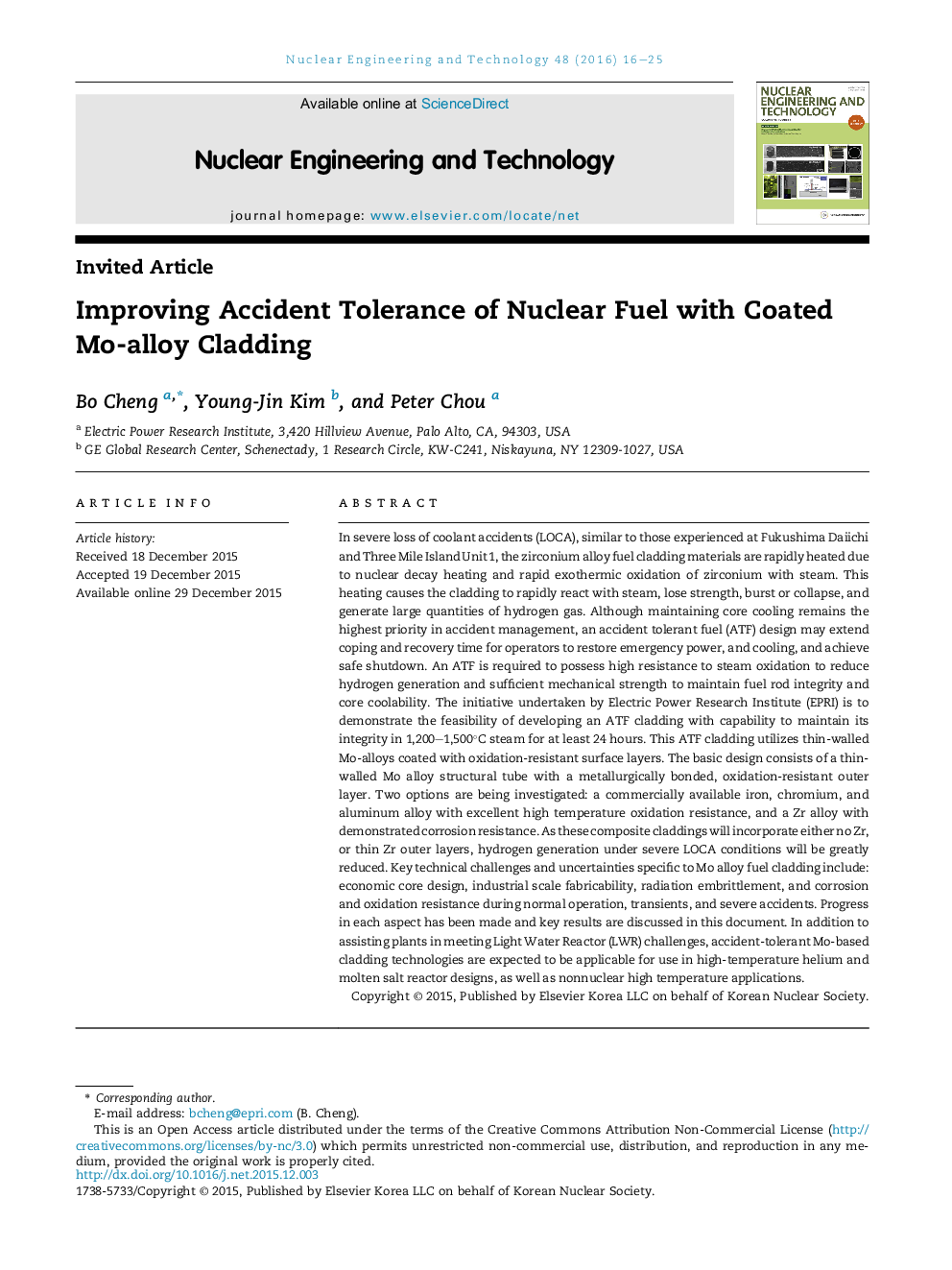| Article ID | Journal | Published Year | Pages | File Type |
|---|---|---|---|---|
| 1739996 | Nuclear Engineering and Technology | 2016 | 10 Pages |
In severe loss of coolant accidents (LOCA), similar to those experienced at Fukushima Daiichi and Three Mile Island Unit 1, the zirconium alloy fuel cladding materials are rapidly heated due to nuclear decay heating and rapid exothermic oxidation of zirconium with steam. This heating causes the cladding to rapidly react with steam, lose strength, burst or collapse, and generate large quantities of hydrogen gas. Although maintaining core cooling remains the highest priority in accident management, an accident tolerant fuel (ATF) design may extend coping and recovery time for operators to restore emergency power, and cooling, and achieve safe shutdown. An ATF is required to possess high resistance to steam oxidation to reduce hydrogen generation and sufficient mechanical strength to maintain fuel rod integrity and core coolability. The initiative undertaken by Electric Power Research Institute (EPRI) is to demonstrate the feasibility of developing an ATF cladding with capability to maintain its integrity in 1,200–1,500°C steam for at least 24 hours. This ATF cladding utilizes thin-walled Mo-alloys coated with oxidation-resistant surface layers. The basic design consists of a thin-walled Mo alloy structural tube with a metallurgically bonded, oxidation-resistant outer layer. Two options are being investigated: a commercially available iron, chromium, and aluminum alloy with excellent high temperature oxidation resistance, and a Zr alloy with demonstrated corrosion resistance. As these composite claddings will incorporate either no Zr, or thin Zr outer layers, hydrogen generation under severe LOCA conditions will be greatly reduced. Key technical challenges and uncertainties specific to Mo alloy fuel cladding include: economic core design, industrial scale fabricability, radiation embrittlement, and corrosion and oxidation resistance during normal operation, transients, and severe accidents. Progress in each aspect has been made and key results are discussed in this document. In addition to assisting plants in meeting Light Water Reactor (LWR) challenges, accident-tolerant Mo-based cladding technologies are expected to be applicable for use in high-temperature helium and molten salt reactor designs, as well as nonnuclear high temperature applications.
